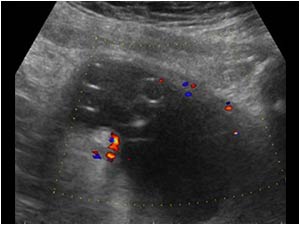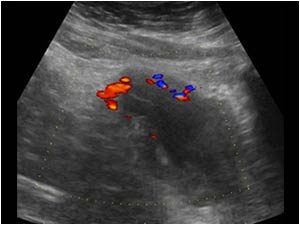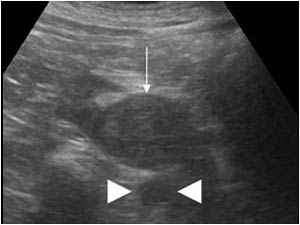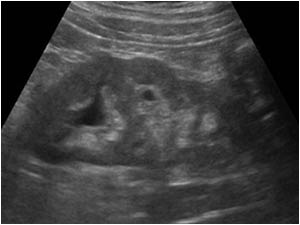Chronic urinary tract infection and hematuria




During cystoscopy a foreign body in the bladder was found. The patient admitted auto manipulation during which a silicone string was lost in the bladder. The foreign body could be removed endoscopically. The renal mass proved to be a renal cell carcinoma, that had been incidentally discovered. The normal treatment for a renal cell carcinoma is a nephrectomy. Because the patient in this case has a horseshoe kidney, a nephrectomy is not possible. The patient was referred to a specialized urological center for a partial nephrectomy.